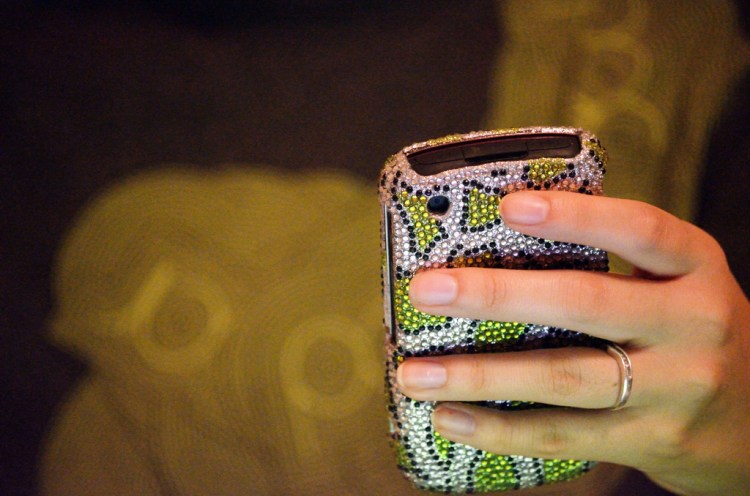This post is part of a series in which we look at both past and upcoming attendees of Mobile Summit — and the kinds of mobile issues they consider to be front and center for 2015. In this post, we talk to Guy Horrocks, Founder and CEO of Carnival Mobile.
Iconic brands with billions in revenue are clearly doing many things right, but their size often keeps them from being able to compete effectively in mobile.
That’s the view of Guy Horrocks, Founder and CEO of Carnival Mobile, a mobile marketing and analytics company that has served some of the world’s biggest brands, including Time Warner, Coca-Cola, and Mondelez (specifically Oreo — one of the huge mobile marketing success stories of the CPG world).
The reasons are multiple: Bigger companies have habits that are hard to dislodge. They lack the scrappiness and tech savvy that exist in startup cultures. And forging agreement between legal and regional constituents across a sprawling bureaucracy can slow them down.
Instead, they continue to delegate to agencies. Only a small number have figured out how to, as Horrocks puts it, own the audience rather than rent them by paying large amounts of money for advertising to attract them artificially.
“The problem with media is that it’s very easy to get lured in,” says Horrocks. “Media’s very predictable: If you want to reach more users, just pay more. The problem with this is once you spend that money, you don’t continue to reach them; you buy $100,000 worth of ads in week one, and then you just have to do it again.”
Contrast that with a brand like Starbucks, or ecommerce or loyalty brands, which use apps strategically, he says: “They’ve got people looking at retention and user acquisition costs. Starbucks now can target anyone who’s only walked by a store, or who’s purchased a coffee, and that’s the ultimate. It’s not a random ad that appears when I’m playing Candy Crush, but a targeted message that can say ‘Hey, you’ve come 5 x this week, come once more, and we’ll give you a free coffee.'”
It’s not as if other brands aren’t trying. They’re experimenting with mobile apps, but their efforts in many cases have failed to yield results, or worse, have been abject failures.
Horrocks separates brands’ mobile app forays into three buckets:
1. Tried it, failed, and said ‘screw this’
According to Horrocks, Unilever took this approach by turning out some 60-odd apps, only to find them fail — but never really understood why they failed. As a result, they came to the conclusion that apps can’t succeed and turned their back on them to a large degree. If you’re a senior marketer at a big brand, and this is sounding familiar, you may want to take another look.
2. Cutting your head off from your tail
Large brands with marketing departments across multiple geographies, with different agency relationships, keep building apps without any connection to one another. “Every single sub-brand, every different market and country, is putting out more and more apps and doing something different,” explains Horrocks. “Some are good, some not, and no one’s sharing best practices.” What’s lacking is a commitment to a strategic approach with a unifying vision, and implementation.
3. Build only one (or two or three) apps — that offer real value
One of Horrocks’ biggest beefs is with apps that have no real purpose. Even the brands that look to be more progressive like Coke can be deceiving, says Horrocks, despite Coke’s being named Mobile Marketer of the Year by MobileMarketer.com just last month. “They have 102 apps and looking at websites such as App Annie, you can figure out probably 90 of the 102 apps have less than 15,000 downloads. From experience in the industry working with other brands, the average cost of building those apps is probably $250,000 to $400,000. Just based on user acquisition costs, that means you’re buying a user at anywhere from $10 to $100. That’s insane.”
Don’t get him started, either, on the kinds of apps that are created by agencies to win awards. “No one’s going to download that augmented 3D photobooth,” he says.
Instead, brands should only be building apps that offer real value to the user — that enhance the customer experience, offer genuine utility, give rewards for loyalty, or entertain them. “And by entertain them,” says Horrocks, “I mean make an actual, decent game or provide content that’s actually valuable. If you can’t do that, you shouldn’t be launching apps.”
The upside in all this is that we are seeing the beginnings of successful collaboration between large brands and marketing platform startups like Carnival. Horrocks’ co-presenter at last year’s Mobile Summit, Dave Statman (then VP, Creative Development for Timer Warner) was quite candid about this. “He didn’t sugar-coat where Time Warner was at in the process,” says Horrocks. “When moderator Tim (Lee of Sequoia) quizzed him, he was very forthcoming and said, ‘Look, to be honest, we don’t know exactly what we’re doing in all these spaces.” And it’s why conversations and collaboration between the startup tech space and big brands need to continue.
The Mobile Summit coming up the week after next will feature more in-depth conversations about brands driving growth using mobile tech and strategy.
This year’s Mobile Summit promises more candid conversations that are moving the needle in mobile. It all takes place February 23 and 24 at the scenic Cavallo Point Resort in Sausalito, CA.
Space is extremely limited — we’ve only got seats for a total of 180 executives — but it’s not too late to apply for one of the remaining seats.

